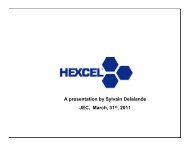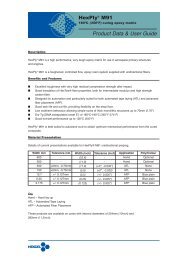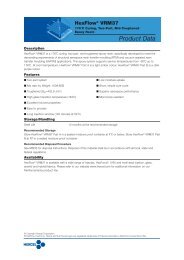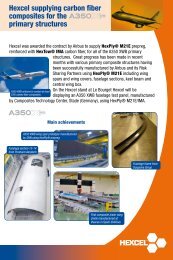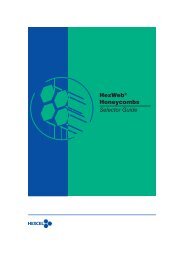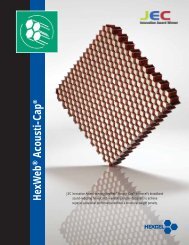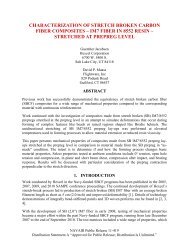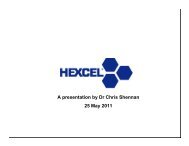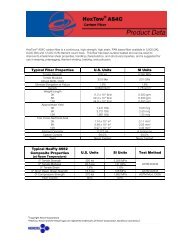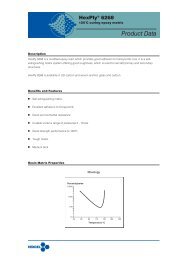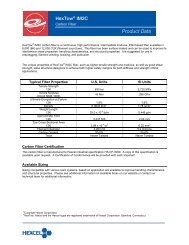failure initiation and effect of defects in structural ... - Hexcel.com
failure initiation and effect of defects in structural ... - Hexcel.com
failure initiation and effect of defects in structural ... - Hexcel.com
You also want an ePaper? Increase the reach of your titles
YUMPU automatically turns print PDFs into web optimized ePapers that Google loves.
<strong>of</strong>ten be referred as “DFC” <strong>in</strong> this paper as most <strong>of</strong> the f<strong>in</strong>d<strong>in</strong>gs (<strong>in</strong> trend) are valid for DFC <strong>in</strong><br />
general.<br />
1.1 DFC Properties Overview<br />
For high performance DFC, special attention is taken to produce a high level <strong>of</strong> orientation<br />
r<strong>and</strong>omness <strong>of</strong> the short fibers, <strong>and</strong> to also ma<strong>in</strong>ta<strong>in</strong> straight fibers . High performance DFC like<br />
HexMC also have high fiber volume (>50%) <strong>and</strong> fiber length greater than 25 mm. This<br />
guaranties fiber to fiber load paths. As a result, moduli <strong>of</strong> such high performance DFC are<br />
similar to a quasi-isotropic (QI) lay-up made from the same fiber <strong>and</strong> res<strong>in</strong> constituents, see<br />
Figure 1.<br />
Part <strong>of</strong> the difference between DFC <strong>and</strong> QI lam<strong>in</strong>ates <strong>com</strong>es from the fact that DFC do not<br />
concentrate on the 0,+/-45, 90 directions as are QI lay-ups.<br />
Figure 1. Comparison <strong>of</strong> tension, <strong>com</strong>pression <strong>and</strong> flexure moduli <strong>of</strong> DFC (HexMC) <strong>and</strong> quasi<br />
isotropic lam<strong>in</strong>ate made from the same prepreg batch.<br />
As a result, the coupon stiffness can be predicted fairly accurately by us<strong>in</strong>g properties from QI<br />
lay-up with the same fiber, res<strong>in</strong> <strong>and</strong> fiber volume as high performance DFC. If care is taken to<br />
ma<strong>in</strong>ta<strong>in</strong> r<strong>and</strong>omness <strong>of</strong> the DFC dur<strong>in</strong>g the high pressure <strong>com</strong>pression mold<strong>in</strong>g <strong>of</strong> parts then<br />
part stiffness can be estimated us<strong>in</strong>g QI properties. However, strengths <strong>of</strong> DFC do not follow the<br />
strengths <strong>of</strong> QI lam<strong>in</strong>ate, as shown <strong>in</strong> Figure 2.




